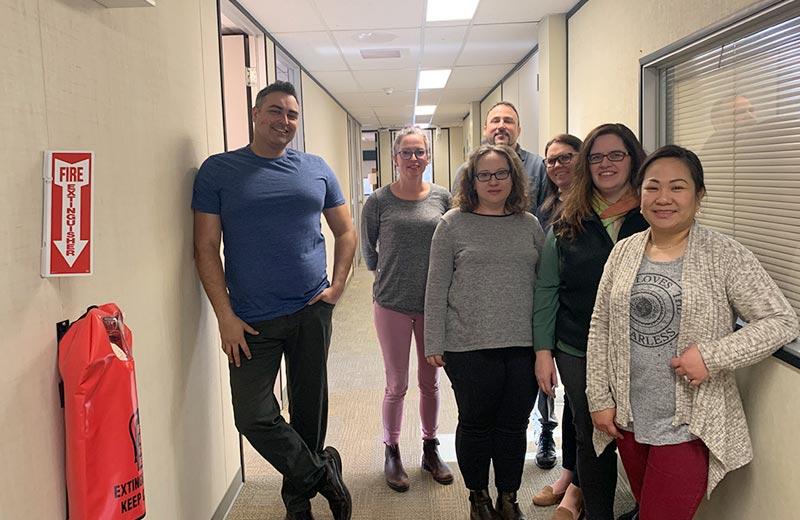Forming trusting relationships
This story is an example of what happens when a health care team, including Dr. McLeod, a family doctor, works with patients over a span of a few years to form a trusting relationship.
Susan was 70 years old when she connected with one of the health care teams (Team Four) in Prince George in 2015. She was quite delirious, had dementia, and was in the hospital. The team became involved in her care before Susan was sent home from the hospital, and they determined the level of support she would need to live at home.
Susan’s husband, Martin, was mainly independent at the time and living at home, but had chronic pain.
When Susan went home from the hospital, she needed to prepare for cataract surgery and had to have eye drops done three times a day. Her husband was too frail to help, but the drops needed to be done.
To support her, the health care team went to Susan’s house three times a day to give her the eye drops. The goal was to keep Susan at home if possible.
“Kudos to the team for making it work,” says Dr. McLeod. “The place wasn’t safe for the team to go into; they would only see the patient at the door.”
The team explained to Susan why the home wasn’t safe for them to enter and she understood the reasons. The couple trusts the team members as they have built a long-term relationship with the family.
Unfortunately, at the end of 2019, Martin got sick with pneumonia. He was then diagnosed with cancer and had an infection, and had to go to the hospital.
Patient support
While Martin was in hospital, the health care team was working with Susan to keep her at home. One day, the life skills worker on the team had a bad feeling, as she hadn’t heard from Susan for a couple days. She went to her house and found Susan lying on the floor with a broken hip. The life skills worker supported her until the ambulance came to transport her to the hospital.
Now, with both Susan and Martin in the hospital, the goal was to support them so they could return home or move into a facility.
Throughout this journey, Dr. McLeod and the health care team would talk together about what was happening with the patients. The team would work together to support both patients as best as they could, and then Dr. McLeod would visit them in the hospital.
"When communications [between the team and doctor] are well done, you can just relax," says Dr. McLeod.
Over the span of a few years, the health care team, including Dr. McLeod, worked to do what was best for the patients at that time, continually reassessing what they needed for their care.
Making life-changing decisions
In the end, the ability of the health care team to support the patients and help them make life-changing decisions is what helped the patients. The team was able to guide the couple so they received the care they wanted. Susan is currently waiting for a place in a long-term care facility, and Martin is happily living in his alternate housing.
“All this happened because of the relationship. This is what the primary care home is – provide accessible, quick, coordinated care over a long time,” says Dr. McLeod.
“We were able to support them with what they wanted [for care], we didn’t have an agenda” says Roberta Miller, team lead for Team Four.
Note: This story happened before the COVID-19 pandemic, and care might look a little different right now as staff take the necessary precautions to keep patients and teammates safe. Patient and family member names have been changed to protect confidentiality.














Comments